|
Detection of iron deficiency (ID) in children is critical when working to optimize their brain development. ID is the number one most common nutritional deficiency experienced worldwide by children. Given that fact, you would expect that all physicians would be well-versed in the signs, symptoms and management of ID. Unfortunately, this is not the case. ID affects 2.4 million U.S. children and 273 million children worldwide (Bartonek, et al. 2007) and is under-diagnosed. This is especially the case in children with genetic conditions or learning challenges whose symptoms of ID are often dismissed as simply part of their primary diagnosis.
Any discussion of ID would be incomplete without discussing the role the gut plays in iron absorption. It's a tightly controlled process that is influenced by many factors. I'll review key factors of gut function that influence iron levels within the body as well as several other factors that impact iron absorption. |
I'll explain the consequences, signs, symptoms and causes of ID as well as the labs used to diagnose it. The answer to ID is not always simply supplementing with iron. As always, the best approach to managing any nutrient deficiency is finding and addressing the root cause.
FUNCTIONS OF IRON
- Oxygenation - Iron is best known for its role in hemoglobin synthesis. Hemoglobin is the protein within red blood cells that carries oxygen. Without sufficient amounts of iron the body struggles to make hemoglobin which results in a low oxygen carry capacity of red blood cells. Image 1 shows the heme component of hemoglobin that contains iron which is the actual binding site of oxygen within hemoglobin. All tissues of the body require oxygen to function properly, but the brain is especially sensitive to a decrease in supply of oxygen.
- Energy Production - Many enzymes within the body rely on iron as a cofactor to function properly including enzymes within the Citric Acid Cycle. This is a process within mitochondria that our body uses to convert food to energy. Iron is also a cofactor for succinate dehydrogenase, an enzyme within the electron transport chain, another essential step of energy production found within the mitochondria. For more information about supporting mitochondrial function you can read Mitochondria - Why They're Important and What They Need to Function
- Immune System - Both the adaptive and the innate immune system are dependent on iron. While the mechanism behind this function of iron isn't totally understood some aspects have been studied and reported. Iron is important for T cell function and development, which is an energy dependent process. (Cronin, et al. 2019). In addition, ID has been shown to significantly impair cell mediated immunity in children. (Das, et al. 2014)
- Cognitive Function - The most energy dependent organ of the body is the brain. For that reason alone, ID can contribute to long term, irreversible, cognitive impairment in children. (Lozoff, et al. 2006). In addition to energy production, iron is critical for myelination of neurons. Myelination is the process of creating the fatty sheath surrounding neuronal processes and fibers that increases the efficiency of neve impulse transmission. Impaired myelination results in slower auditory and visual processing within the brain. (Algarín, et al. 2003) Lastly, ID has been shown to ultimately result in lower IQ in children. A study from 2007 showed treatment with iron did increase IQ points by 4.8 in a 30 children, but these points did not bring IQ up to the same level as that of children without ID.(Agoaglu, et al 2007) Lastly, iron plays a role in the metabolism of monoamines, which includes dopamine, norepinephrine and serotonin. The effect of ID on monoamine neurotransmitters appears to impact boys more than girls. (Burhans, 2005)
CONSEQUENCES OF IRON DEFICIENCY
Brain:
ID can have long term cognitive and social-emotional impact on children, especially when experienced in infancy. Due to it's role in oxygenation, energy production, myelination and neurotransmitter function. ID during early brain development can impact white matter formation, monamine metabolism and functioning of the hippocampus. (Beard 2008) The hippocampus plays a major role in learning and memory. The brain changes seen in ID can lead to altered brain function that lasts into adulthood. (Georgieff 2011)
Myelination of neurons within the brain begins around the seventh month of gestation. After birth the brain rapidly develops over the following two years. This is also the most common stage of development when ID can occur. For these reasons physicians, midwives and other healthcare practitioners working with pregnant women, newborns and infants must be aware of risk factors that can lead to ID.
Sleep:
Multiple studies and published review articles exist that link ID to sleep issues in infants and children.(Leung, et al. 2020) Given the importance of sleep to childhood development, growth and overall health one can see that this is yet another means by which ID can greatly impact the health of children. Sleep disturbance in children can be one of the biggest challenges to parenting that can impact the well-being of the entire family.
Sleep spindles are EEG waves seen during NREM (non-rapid eye movement) sleep. They represent brain activity that's necessary for memory formation, development of the cerebral cortex and regulation of motor activity. (Andrillon, et al. 2011) ID in 6 month old infants was shown to result in altered sleep spindle patterns. (Peirano, et al. 2007) Alterations in sleep can be long-lasting despite reversal of ID. A group of researchers in Chile found 4 year old children who experienced ID as infants had persistent alterations to their sleep organization (Peirano, et al. 2013)
Due to the brain changes seen in regulation of motor activity in infants with ID, it's no wonder that restless sleep in children is often a result of ID. (Dosman, et al. 2012) Other causes of restless sleep in children exist, but some sleep specialists recommend supplementing with iron in children with restless sleep who also have a ferritin of <50 ug/L. Researchers in 2013 reported, "The most striking single symptom (of ID) was awakening after 1-3 h of sleep followed by screaming, crying, kicking or hitting the legs." (Tilma, et al. 2013)
Gross motor skills:
Researchers at the Center for Human Growth and Development at the University of Michigan in 2006 reported on the effects of ID on gross motor development in children in Costa Rica. Not only are gross motor skills of infants with ID delayed, but "there was no evidence of catch-up in motor development, despite iron therapy in infancy that corrected ID anemia in all cases." (Shafir, et al. 2006) Their findings confirmed that of many others: "Children who have iron-deficiency anemia in infancy are at risk for long-lasting developmental disadvantage as compared with their peers with better iron status." (Lozoff, et al. 1991) These "development disadvantages" extend beyond cognition and include gross motor skills. Shafir, et al later mentioned the dilemma of ID detection without anemia as this is less often detected by practitioners who only use hemoglobin levels to screen for ID. (Shafir, et al. 2008)
Behavior:
Last, but not least, is the long-term social-emotional issues that can result from ID. Infants and toddlers who experience ID have been found by "virtually every case-controlled study" to be "more wary, hesitant, solemn, unhappy, kept closer to their mothers" (Lozoff, et al. 2006) Once again, these effects were are not necessarily reversible once ID is treated. These effects can be long-term. Parents and teachers had reported more social problems, anxiety/depression and attention problems in children who previously experienced ID.(Lozoff, et al. 2006) Attention problems are also common among children and young adults who were iron deficient as infants. Researchers from Department of Psychology and Social Behavior, University of California, Irvine stated, "Participants with chronic, severe ID in infancy performed less well on frontostriatal-mediated executive functions, including inhibitory control, set-shifting, and planning." (Lukowski, et al. 2010) These and results from other studies show that executive function, impulsivity and decision-making in adolescents and young adults can be impacted by previous ID in infancy. Experts from Division of Child Development and Community Health at the Universty of California in San Diego went so far as to say, "Youth with a known history of IDA would benefit from monitoring for emotional volatility and inattention, both during childhood and at adolescence, as they become more independent and have the potential to engage in serious risk behaviors." (East, et al. 2018)
Brain:
ID can have long term cognitive and social-emotional impact on children, especially when experienced in infancy. Due to it's role in oxygenation, energy production, myelination and neurotransmitter function. ID during early brain development can impact white matter formation, monamine metabolism and functioning of the hippocampus. (Beard 2008) The hippocampus plays a major role in learning and memory. The brain changes seen in ID can lead to altered brain function that lasts into adulthood. (Georgieff 2011)
Myelination of neurons within the brain begins around the seventh month of gestation. After birth the brain rapidly develops over the following two years. This is also the most common stage of development when ID can occur. For these reasons physicians, midwives and other healthcare practitioners working with pregnant women, newborns and infants must be aware of risk factors that can lead to ID.
Sleep:
Multiple studies and published review articles exist that link ID to sleep issues in infants and children.(Leung, et al. 2020) Given the importance of sleep to childhood development, growth and overall health one can see that this is yet another means by which ID can greatly impact the health of children. Sleep disturbance in children can be one of the biggest challenges to parenting that can impact the well-being of the entire family.
Sleep spindles are EEG waves seen during NREM (non-rapid eye movement) sleep. They represent brain activity that's necessary for memory formation, development of the cerebral cortex and regulation of motor activity. (Andrillon, et al. 2011) ID in 6 month old infants was shown to result in altered sleep spindle patterns. (Peirano, et al. 2007) Alterations in sleep can be long-lasting despite reversal of ID. A group of researchers in Chile found 4 year old children who experienced ID as infants had persistent alterations to their sleep organization (Peirano, et al. 2013)
Due to the brain changes seen in regulation of motor activity in infants with ID, it's no wonder that restless sleep in children is often a result of ID. (Dosman, et al. 2012) Other causes of restless sleep in children exist, but some sleep specialists recommend supplementing with iron in children with restless sleep who also have a ferritin of <50 ug/L. Researchers in 2013 reported, "The most striking single symptom (of ID) was awakening after 1-3 h of sleep followed by screaming, crying, kicking or hitting the legs." (Tilma, et al. 2013)
Gross motor skills:
Researchers at the Center for Human Growth and Development at the University of Michigan in 2006 reported on the effects of ID on gross motor development in children in Costa Rica. Not only are gross motor skills of infants with ID delayed, but "there was no evidence of catch-up in motor development, despite iron therapy in infancy that corrected ID anemia in all cases." (Shafir, et al. 2006) Their findings confirmed that of many others: "Children who have iron-deficiency anemia in infancy are at risk for long-lasting developmental disadvantage as compared with their peers with better iron status." (Lozoff, et al. 1991) These "development disadvantages" extend beyond cognition and include gross motor skills. Shafir, et al later mentioned the dilemma of ID detection without anemia as this is less often detected by practitioners who only use hemoglobin levels to screen for ID. (Shafir, et al. 2008)
Behavior:
Last, but not least, is the long-term social-emotional issues that can result from ID. Infants and toddlers who experience ID have been found by "virtually every case-controlled study" to be "more wary, hesitant, solemn, unhappy, kept closer to their mothers" (Lozoff, et al. 2006) Once again, these effects were are not necessarily reversible once ID is treated. These effects can be long-term. Parents and teachers had reported more social problems, anxiety/depression and attention problems in children who previously experienced ID.(Lozoff, et al. 2006) Attention problems are also common among children and young adults who were iron deficient as infants. Researchers from Department of Psychology and Social Behavior, University of California, Irvine stated, "Participants with chronic, severe ID in infancy performed less well on frontostriatal-mediated executive functions, including inhibitory control, set-shifting, and planning." (Lukowski, et al. 2010) These and results from other studies show that executive function, impulsivity and decision-making in adolescents and young adults can be impacted by previous ID in infancy. Experts from Division of Child Development and Community Health at the Universty of California in San Diego went so far as to say, "Youth with a known history of IDA would benefit from monitoring for emotional volatility and inattention, both during childhood and at adolescence, as they become more independent and have the potential to engage in serious risk behaviors." (East, et al. 2018)
SYMPTOMS OF IRON DEFICIENCY
The most common symptom of ID in children is fatigue. However, fatigue can manifest very differently in children than it does in adults. Children who are tired can actually present as hyperactive as they continuously move in order to avoid falling asleep during the day. It's commonly referred to as "tired-wired". Fatigue can also present as behavioral issues that include lack of focus, irritability and even aggression. Fatigue from ID is due not only to the low oxygen carrying capacity of red blood cells but also to low activity of the enzymes mentioned above needed for energy production within mitochondria.
The most common symptom of ID in children is fatigue. However, fatigue can manifest very differently in children than it does in adults. Children who are tired can actually present as hyperactive as they continuously move in order to avoid falling asleep during the day. It's commonly referred to as "tired-wired". Fatigue can also present as behavioral issues that include lack of focus, irritability and even aggression. Fatigue from ID is due not only to the low oxygen carrying capacity of red blood cells but also to low activity of the enzymes mentioned above needed for energy production within mitochondria.
DIAGNOSIS OF IRON DEFICIENCY
For these reasons, assessing iron status in children is very important. This is done through a blood draw that includes a serum iron, TIBC, % saturation and ferritin. The ferritin level is the most accurate means of assessing overall iron status in the absence of infection and inflammation. (WHO, 2011) Ferritin is an intracellular protein that stores iron and releases it as needed. It helps maintain a stable amount of iron in the body by storing it when there's too much and releasing it when there's too little. Because it can be elevated in the presence of infection or inflammation it shouldn't be the only means used to assess iron status.(Kell and Pretorius 2014) Many doctors will only assess iron status based on hemoglobin (Hb) levels. This is a poor means of assessing iron status as Hb levels will be low in those with long-standing ID and will miss early onset ID.
CAUSES OF IRON DEFICIENCY
Malabsorption is a major cause of ID. There are multiple factors within the gut that can contribute to malabsorption.
Gut factors that impact iron absorption:
Iron can be found within the body in two states: Fe2+ and Fe3+. The form that's absorbable by the body is Fe2+. Iron takes this form in a low pH (acidic) environment. This low pH is created by gastric acid production within the stomach. Without gastric acid or when gastric acid production is blocked by an acid blocker like Omeprazole (Prilosec) or Ranitadine (Zantac) iron absorption will also be blocked. Taking supplemental iron may be helpful but if the pH environment within the GI tract is not remedied then the supplemental iron will not be absorbed. Iron that is not absorbed causes GI irritation, upset tummies and constipation.
Gut factors that impact iron absorption:
- stomach acidity (pH)
- microbiome
- infections
- inflammation
- biofilm
Iron can be found within the body in two states: Fe2+ and Fe3+. The form that's absorbable by the body is Fe2+. Iron takes this form in a low pH (acidic) environment. This low pH is created by gastric acid production within the stomach. Without gastric acid or when gastric acid production is blocked by an acid blocker like Omeprazole (Prilosec) or Ranitadine (Zantac) iron absorption will also be blocked. Taking supplemental iron may be helpful but if the pH environment within the GI tract is not remedied then the supplemental iron will not be absorbed. Iron that is not absorbed causes GI irritation, upset tummies and constipation.
|
Another factor impacting absorption is the microbiome within the gut lumen. Commensal bacteria are those that are part of the normal flora of the gut. They exist in varying amounts in different areas of the gut. The upper gastrointestinal tract has the lowest concentration of bacteria (cfu/mL) while the lower gastrointestinal tract has a very high level of bacteria. Too much bacteria in the small intestine (small intestinal bacterial overgrowth, aka SIBO) can interfere with iron absorption. (Losurdo, et al. 2020)
|
Iron is absorbed from the duodenum which is in the uppermost part of the small intestines. Abnormally high levels of bacteria or yeast here will result in malabsorption of iron and other micronutrients.
Iron is an essential element for nearly all living organisms including bacteria within the gut. These bacteria fundamentally get served iron first and we get the leftovers. In this way elevated levels of bacteria in the small intestine reduces the amount of iron available for absorption. Our bodies essentially play iron tug-of-war with bacteria in the gut. Taking iron as a supplement also nourishes this elevated level of bacteria in the gut, potentially making the root cause of ID worse.
A fascinating way that bacteria scavenge iron is through iron chelating compounds called siderophores. These siderophores are some of the strongest iron binding agents known. They possess a higher affinity for iron than host transport proteins do. Bacteria secrete siderophores that bind to iron then harvest the siderophores as a means to collect iron from their environment. (Miethke and Marahiel 2007) The tug-of-war continues as the host cells secrete, a protein that binds siderophores. (Wilson, et al, 2016) This battle for iron underscores it's importance not only to human health but to the health of all organisms including bacteria.
One pathogenic bacteria that's worth noting for its dependence on iron is Klebsiella pneumoniae. The presence of this bacteria in the gastrointestinal tract has been implicated as "most likely triggering factor involved in the initiation and development of" two autoimmune conditions Ankylosing Spondylitis and Crohn's Disease. (Rashid, et al. 2013)
|
Another factor within the gut that can impact iron absorption is biofilm. Biofilm is a complex polymer made of polysaccharides, proteins, lipids, and extracellular DNA. It's an extracellular matrix that yeast and bacteria secrete to help them cling to surfaces and in some cases medical devices inside the body. It helps them form colonies, communicate with one another and protects them from antimicrobials. Some common forms of biofilm are plaque on teeth and the slime at the bottom of a bottle of kombucha. Biofilms on surfaces are difficult to remove without the use of mechanical scrubbing or enzymes. They're a significant cause of chronic infections and antibiotic resistant infections.
|
Pathogenic (disease causing) as well as commensal (healthy, symbiotic) bacteria within the gut create biofilm. They will pull positively charged ions (cations) from their environment in order to strengthen their biofilm. These cations are often in the form of magnesium, calcium and iron. Dr. Rodney Donlan from the CDC has written, "...divalent cations such as calcium and magnesium, which have been shown to cross-link with the polymer strands and provide greater binding force in a developed biofilm." (Donlan 2002) "Metal cations, such as calcium, magnesium, and iron have been implicated in maintaining matrix integrity." (Kostakioti, 2013) Using these minerals as supplements can actually worsen a biofilm situation in the presence of a pathogenic bacteria. Some examples of pathogenic bacteria that do this are Pseudomonas aeruginosa, Campylobacter jejuni and Klebsiella pneumoniae. (Kang and Kirienko, 2018; Oh, et al, 2018; Chen, etal 2020) Researchers in India showed that limiting iron availability through the use of an iron antagonizing agent helped to reduce biofilm formation by K. pneumoniae. (Chhibber, et al. 2013) They also reminded us that "Free iron is critical for the growth of biofilm associated bacteria."
Hepcidin is the key regulator of systemic iron homeostasis that is released by the liver in response to inflammation and iron overload. It works by blocking iron absorption in the duodenum. Inflammation, autoimmune disease, critical illness, some cancers and chronic kidney disease all result in elevated hepcidin which will reduce iron absorption. (Ruchala and Nemeth 2015) While testing hepcidin levels would be ideal in determining the cause of ID, it's currently not readily available through routine laboratories.(Girelli, et al. 2016) However, knowing the mechanisms that control hepcidin can help clinicians understand the means by which these physiologic states can interfere with iron absorption.
Malabsorption of iron can also occur in the presence of a riboflavin deficiency (Agte, et al. 1998, Powers, et al. 1998), which can be seen as an elevated glutaric acid on an organic acid test as well as through signs and symptoms:
Signs and symptoms of a riboflavin deficiency include:
For more information about riboflavin deficiency I recommend reading Riboflavin (vitamin B-2) and health.
Signs and symptoms of a riboflavin deficiency include:
- glossitis (red, swollen tongue)
- angular cheilitis (rash or cracks in the corners of the mouth)
- cracked, dry lips
- irritated mucosal membrane of the mouth
- sore throat
- moist, scaly skin inflammation
- hearing loss
- choking, swallowing, feeding issues
- tongue and/or facial weakness
- sensory gait ataxia (clumsy, staggering walk)
- dysphonia – inability to produce sound due to laryngeal weakness
For more information about riboflavin deficiency I recommend reading Riboflavin (vitamin B-2) and health.
Aside from the above mentioned gut issues, the most common cause of ID in children is lack of iron in the diet. Iron from meat (heme iron) is more easily absorbed than non-heme (plant-based) iron. Ensuring foods rich in iron, both heme and non-heme, are part of the diet of pregnant women and children can go a long way to prevent issues associated with ID.
Lastly, it should not go unmentioned that certain phenolic compounds are strong inhibitors of iron absorption. (Merceles and Hunstein 2011, Lesjak, et al. 2014) Polyphenols that are given as supplements such as EGCG, curcumin, resveratrol and quercetin can all result in decreased absorption of non-heme iron. Heme iron is found only in meat, poultry, and seafood. Non-heme iron is found in plants like whole grains, nuts, seeds, legumes, leafy greens and most iron supplements. While phenolic compounds have multiple healing properties including neuroprotection, anti-cancer, anti-inflammatory and anti-histamine their potential side effects, especially when used at higher pharmaceutical doses, should be monitored. Checking serum iron and ferritin levels regularly in those who use these substances is an ideal way to monitor this potential side effect.
TREATMENT OF IRON DEFICIENCY
You can now see that treating ID can be a little more complicated than just supplementing with iron given all of the above information, especially the role that bacteria in the gut can play in iron absorption. While giving children with ID an iron supplement seems like the quickest, easiest solution, in some situations it can make the root cause of the problem worse. We sometimes don't recommend iron supplementation in patients who have obvious gastrointestinal issues and stool testing can be done immediately. It's imperative that clinicians working with children with ID have an understanding of all factors involved in iron absorption in order to optimize the health of these children as safely and efficiently as possible.
It's important to assess for gastrointestinal issues when other causes of ID are not readily evident. This is best done through a comprehensive stool analysis that can be ordered and interpreted by a trained functional medical or Naturopathic physician. These stool tests are able to detect pathogenic and commensal bacteria in the gut that can impact iron absorption. You can read more about stool analysis options on this page of our website: Stool Test Options.
Choosing the right form of iron to give as a supplement is important as well. Iron that is not absorbed causes GI irritation and constipation. Dark or black stools that are seen after the start of iron supplementation is a sign of poor iron absorption. Non-heme iron supplements are the standard for iron supplementation, but come in many forms. Many standard iron supplements come as iron sulfate which is not easily absorbed and subsequently is more likely to cause gastrointestinal side effects. Iron bisglycinate is a form of iron that is bound to glycine which makes it more absorbable and less likely to cause gastrointestinal issues. The taste of both of these forms of iron can be a problem for most children who cannot swallow capsules.
Micronised microencapsulated iron pyrophosphate is a form of liquid iron that solves both issues of absorption and taste. Micronisation is the process of reducing particles to a smaller size often with the goal of increasing absorption. Microencapsulation is the process of coating small particles with a substance that will either protect it from being broken down in digestion or increase its absorption. Using a phospholipid bilayer or liposome as the protective layer increases absorption of iron pyrophosphate and blocks the iron from coming into contact with taste buds in the mouth, masking the iron flavor. "Micronised microencapsulated ferric pyrophosphate (MMFP) is a recently developed formulation characterised by a higher intestinal bioavailability due to the small particle size distribution at nanometer level. " (Pappalardo, et al. 2019)
It's important to assess for gastrointestinal issues when other causes of ID are not readily evident. This is best done through a comprehensive stool analysis that can be ordered and interpreted by a trained functional medical or Naturopathic physician. These stool tests are able to detect pathogenic and commensal bacteria in the gut that can impact iron absorption. You can read more about stool analysis options on this page of our website: Stool Test Options.
Choosing the right form of iron to give as a supplement is important as well. Iron that is not absorbed causes GI irritation and constipation. Dark or black stools that are seen after the start of iron supplementation is a sign of poor iron absorption. Non-heme iron supplements are the standard for iron supplementation, but come in many forms. Many standard iron supplements come as iron sulfate which is not easily absorbed and subsequently is more likely to cause gastrointestinal side effects. Iron bisglycinate is a form of iron that is bound to glycine which makes it more absorbable and less likely to cause gastrointestinal issues. The taste of both of these forms of iron can be a problem for most children who cannot swallow capsules.
Micronised microencapsulated iron pyrophosphate is a form of liquid iron that solves both issues of absorption and taste. Micronisation is the process of reducing particles to a smaller size often with the goal of increasing absorption. Microencapsulation is the process of coating small particles with a substance that will either protect it from being broken down in digestion or increase its absorption. Using a phospholipid bilayer or liposome as the protective layer increases absorption of iron pyrophosphate and blocks the iron from coming into contact with taste buds in the mouth, masking the iron flavor. "Micronised microencapsulated ferric pyrophosphate (MMFP) is a recently developed formulation characterised by a higher intestinal bioavailability due to the small particle size distribution at nanometer level. " (Pappalardo, et al. 2019)
Lactoferrin is a natural glycoprotein that is one of the main proteins found in human breast milk. It's an iron binding protein that is involved in regulation of iron absorption in the bowel as well as inflammation within the body, having both pro- and anti-inflammatory properties. It also has anti-bacterial properties and helps breakdown biofilm as it sequesters iron away from bacteria.(Giansanti, et al. 2016) "Its ability to limit iron availability to microbes is one of its crucial amicrobial properties" (Kell, et al. 2020)
Bovine lactoferrin can be taken as a supplement and has been shown to increase total serum iron, red blood cell count, hemoglobin, and hematocrit of pregnant women experiencing ID anemia. (Rosa, et al. 2017) They were given 100 mg of lactoferrin twice a day. Taking lactoferrin also decreased their IL-6 level, which is a cytokine involved in inflammation. Infants who received bovine lactoferrin added to their formula were shown to have accelerated neurodevelopment by one year old and improved language by 18 months old. (Li, et al. 2019)
Vitamin C (ascorbic acid) is a powerful enhancer or non-heme iron absorption. Taking an iron supplement together with a vitamin C supplement can greatly improve iron absorption. "Ascorbic acid forms a chelate with ferric (Fe3+) iron in the low pH of the stomach which persists and remains soluble in the alkaline environment of the duodenum." (Ems, et al. 2020)
Bovine lactoferrin can be taken as a supplement and has been shown to increase total serum iron, red blood cell count, hemoglobin, and hematocrit of pregnant women experiencing ID anemia. (Rosa, et al. 2017) They were given 100 mg of lactoferrin twice a day. Taking lactoferrin also decreased their IL-6 level, which is a cytokine involved in inflammation. Infants who received bovine lactoferrin added to their formula were shown to have accelerated neurodevelopment by one year old and improved language by 18 months old. (Li, et al. 2019)
Vitamin C (ascorbic acid) is a powerful enhancer or non-heme iron absorption. Taking an iron supplement together with a vitamin C supplement can greatly improve iron absorption. "Ascorbic acid forms a chelate with ferric (Fe3+) iron in the low pH of the stomach which persists and remains soluble in the alkaline environment of the duodenum." (Ems, et al. 2020)
CONCLUSION
It is critical that ID be detected as early as possible and prevented in infancy to prevent irreversible long term effects. Managing ID safely and effectively can be a complex process. In some children it can be solved as simply as taking an iron supplement. For other children, it can involve looking deeper for the source of the problem in order to treat it safely and effectively. Taking the right steps, using the right supplements and running the right tests can go a long way to prevent the long term effects that ID can have on a child's health and development.
|
Pure Encapsulations Iron liquid contains SunActive® Fe, a micronized water-soluble form of iron pyrophosphate with high bioavailability. A blend of cranberry and blueberry fruit extracts offers antioxidant protection and additional microvascular support.
|
Lactoferrin is a purified derivative of whey protein has important iron binding properties in human nutrition. Among the numerous functional properties of Lactoferrin are the promotion of beneficial intestinal flora through naturally occurring microbial action.
|
This delicious, effervescent, orange-flavored powder easily provides therapeutic dosing of vitamin C. Potassium bicarbonate is included in this formula as a buffering agent and to give it “fizz.“ Also included are quercetin, hesperidin and rutin, which are natural bioflavonoids found in citrus fruits.
|



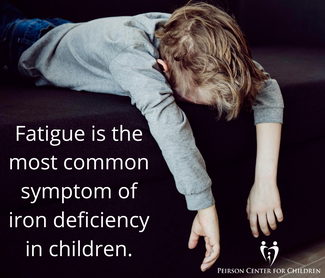
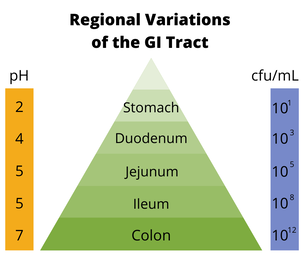
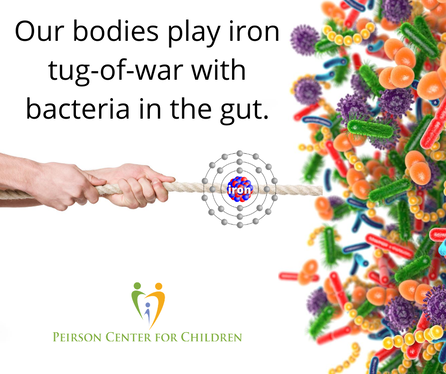
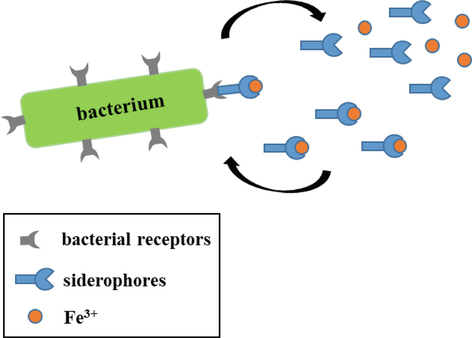
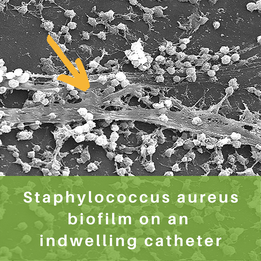
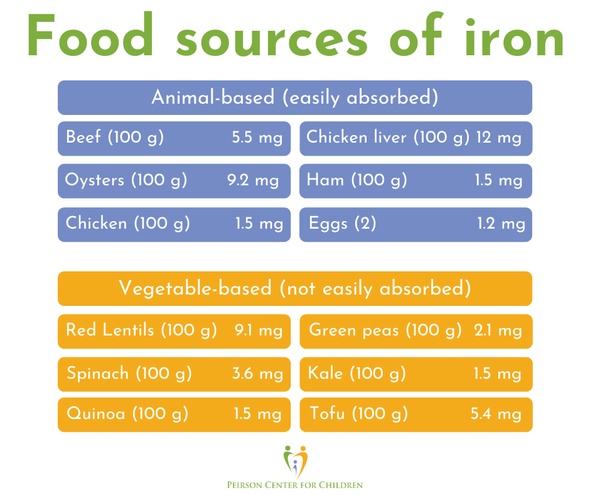
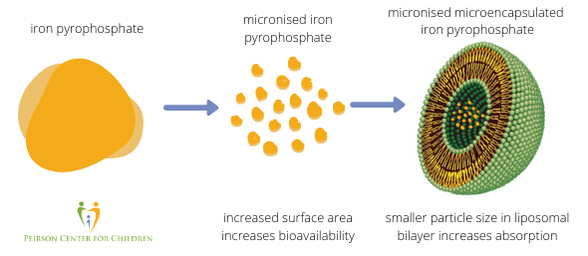

 RSS Feed
RSS Feed